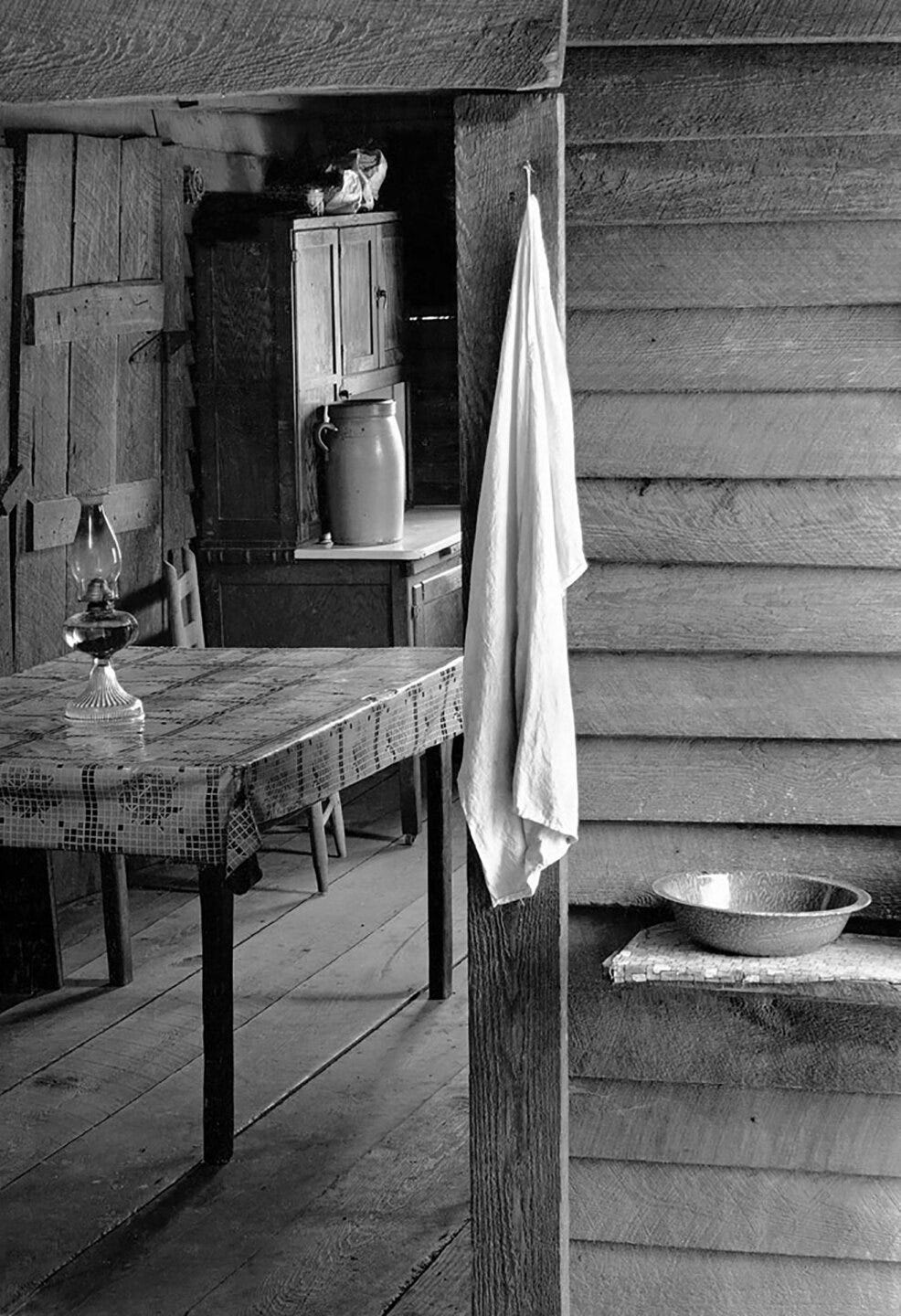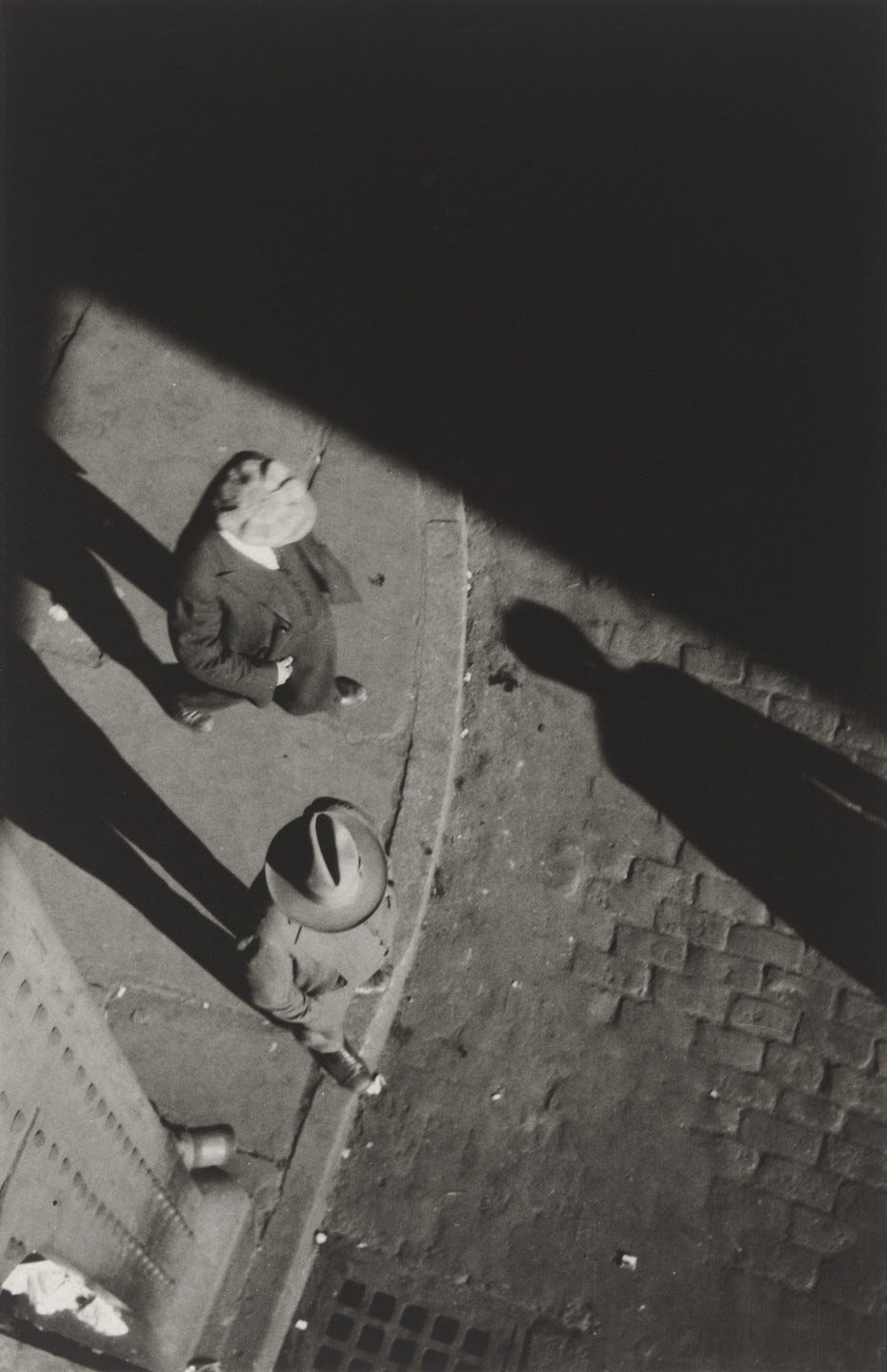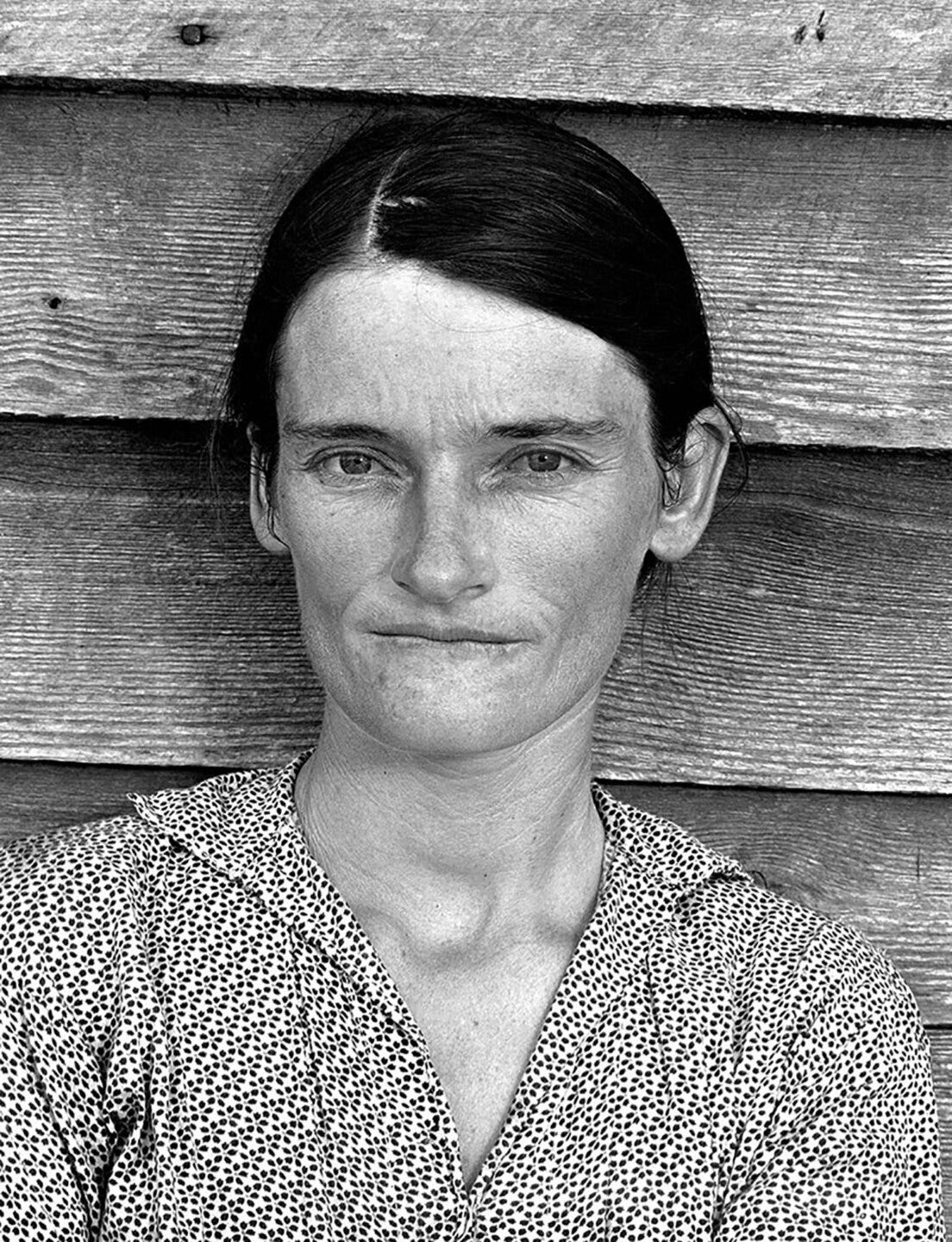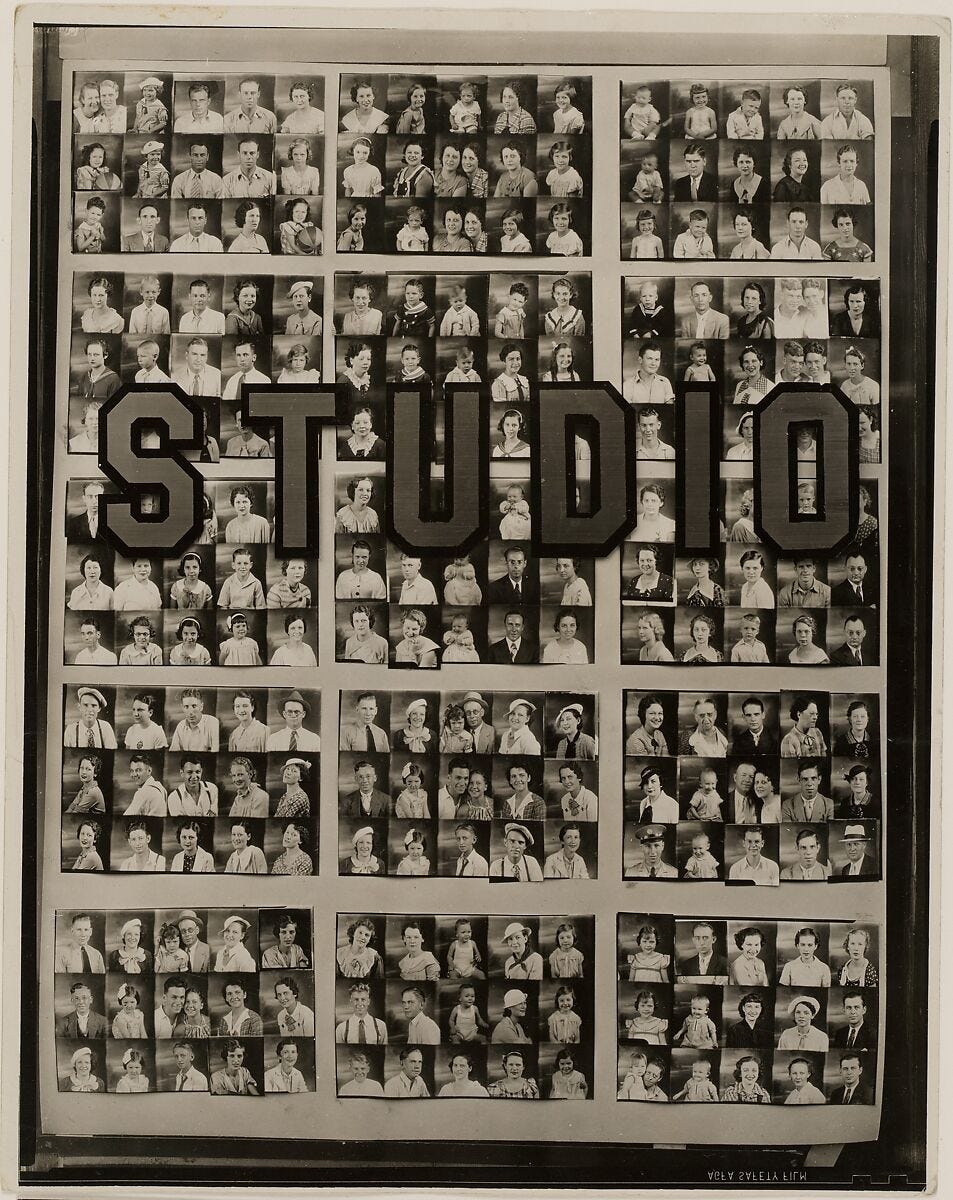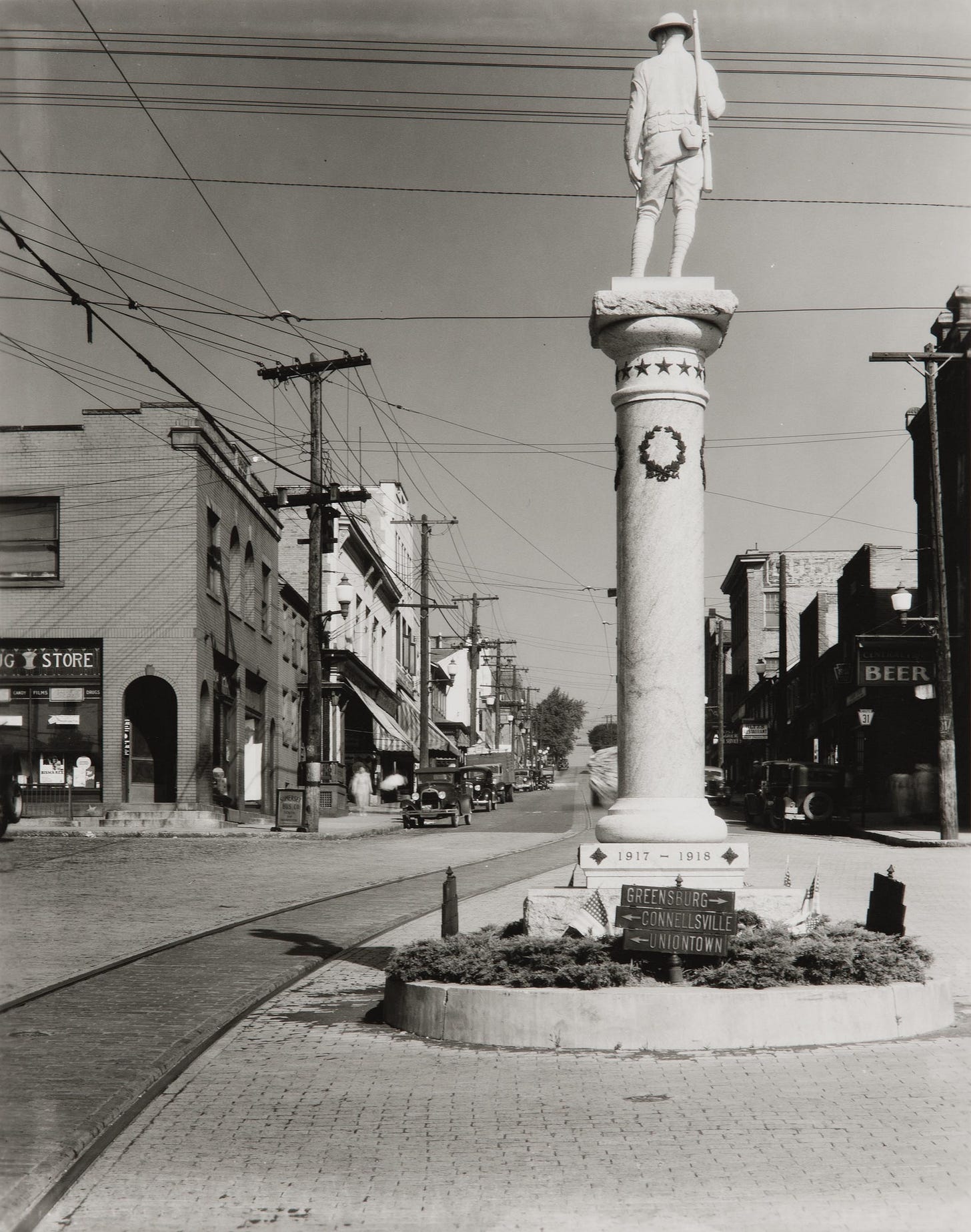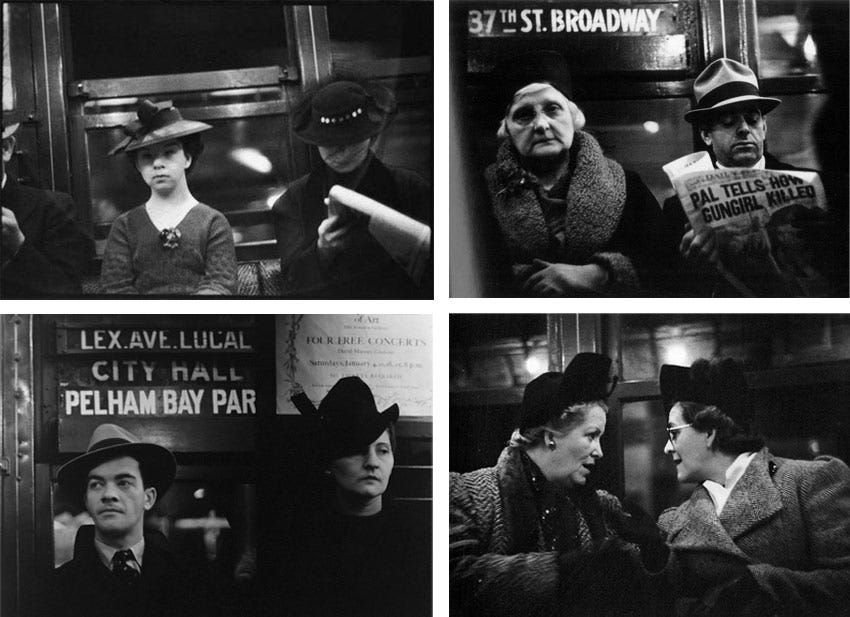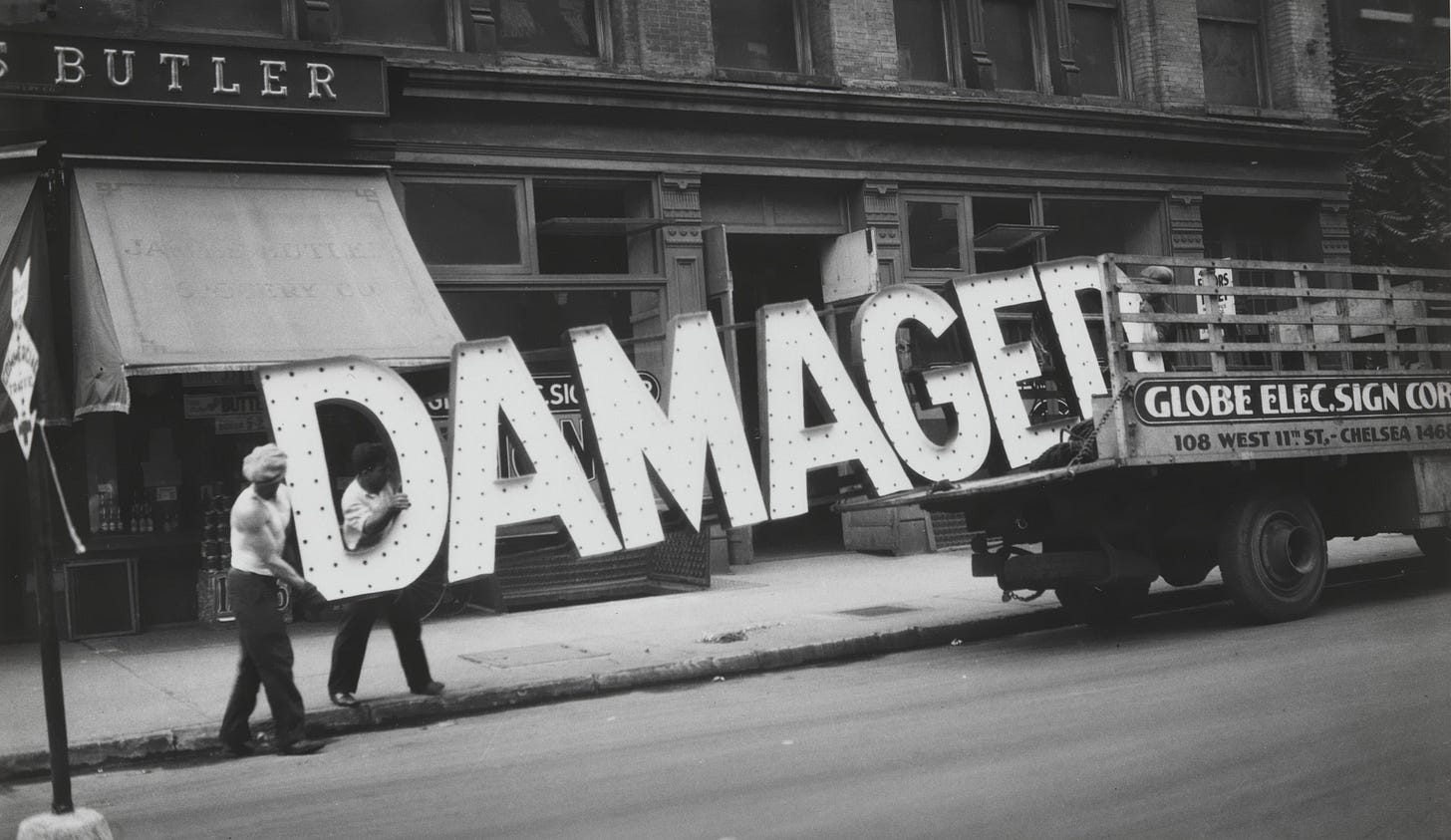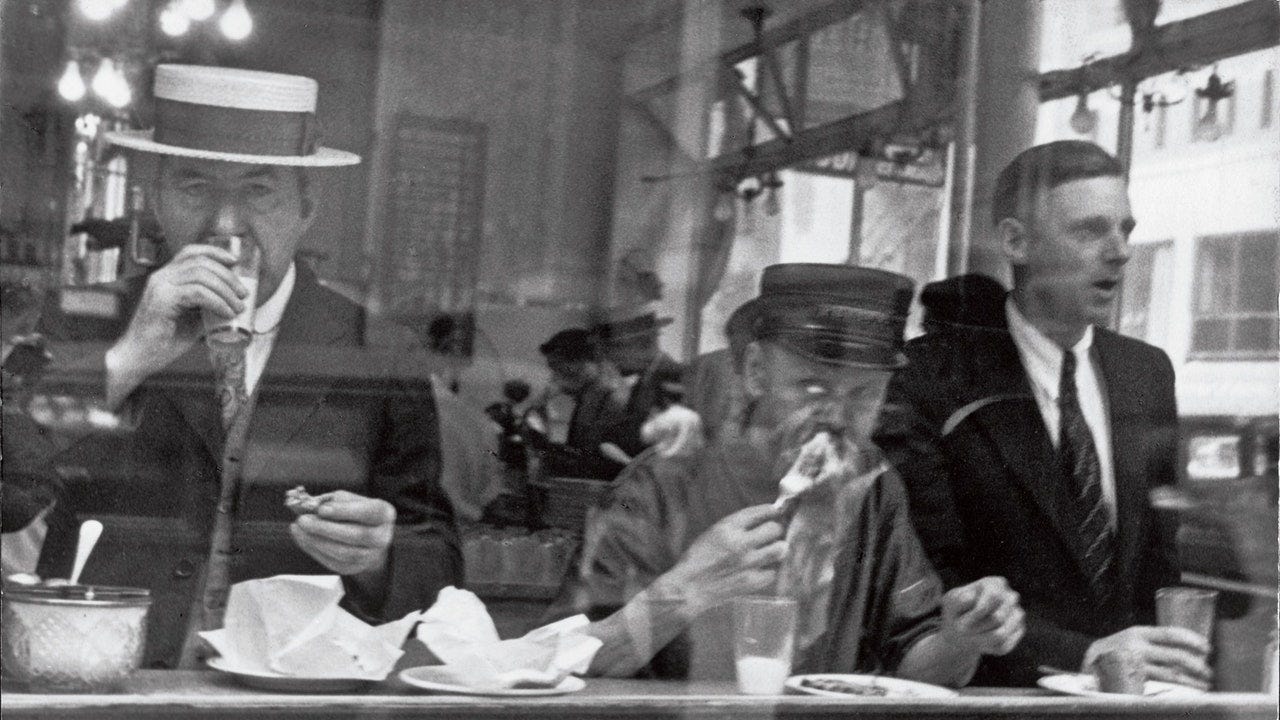Walker Evans was a 20th century photographer who documented American life. He is best known for his work during the Great Depression while working for the Farm Security Administration and National Recovery Administration. His style is documentarian, and extremely influential on later street photographers.
Evans’ photos show the everyday people of the US, and gives a look into how life was then. His subway photos, for example, were taken by hiding his camera so that the subjects were their true selves in his portraits of them.
Walker Evans, Church Organ and Pews, Alabama (1936)
Evans, Farmer’s Kitchen, Hale County, Alabama (1936)
Evans, Third Avenue "L" at 42nd Street, New York (1929)
Evans, Alabama Cotton Tenant Farmer's Wife, (1936), private collection
Evans, Penny Picture Display (1936), Museum of Modern Art, New York
Evans, Main Street in a Small Pennsylvania Town (1935)
Evans, subway photos from a series
Evans, Negroes in the lineup for food at mealtime in the camp for flood refugees, Forrest City, Arkansas (1937)
Evans, Truck and Sign (1928-1930)
Evans, A Graveyard and Steel Mill in Bethlehem, Pennsylvania (1935)
Evans, City Lunch Counter (1929)
Evans, Self-Portrait (1936-41)
Read more
Short video about Walker Evans’ photos and influence
Intro to Evans, from the Met




